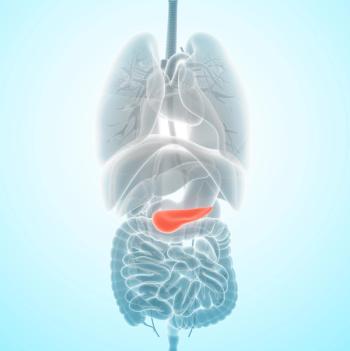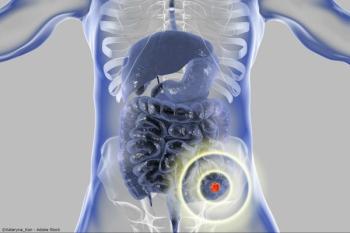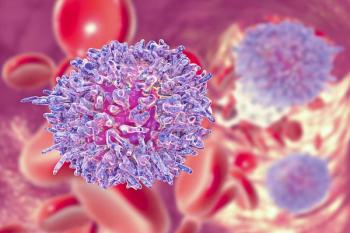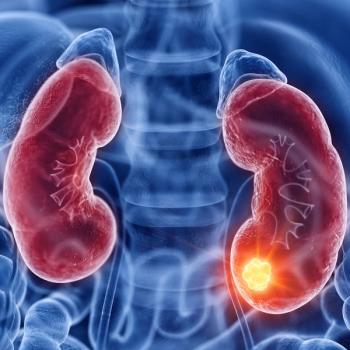
Bridging therapy with talquetamab achieved “notable” disease control among patients with multiple myeloma in a retrospective study.

Your AI-Trained Oncology Knowledge Connection!


Russ Conroy is an Associate Editor for CancerNetwork. He grew up in Hillsborough, New Jersey, and graduated from Rutgers University-New Brunswick in 2022.
On the weekends, he likes to unwind by playing video games with friends, tailgating at Rutgers football games with his family, or building his music collection with a visit to Princeton Record Exchange.

Bridging therapy with talquetamab achieved “notable” disease control among patients with multiple myeloma in a retrospective study.

Prior data from the STRESS-LUNG-1 trial introduced emotional distress as a “psycho-biomarker” for immunotherapy efficacy in non–small cell lung cancer.

Phase 3 findings may contribute to the selection of triplet or quadruplet therapies in newly diagnosed multiple myeloma via frailty-based assessments.

Phase 1 data may support continued research of amphiphile lymph node–targeted immunotherapy in solid tumors.

Data suggest that sotorasib plus panitumumab may represent a valuable new treatment option in this KRAS G12C–mutated colorectal cancer population.

Findings from the KRYSTAL-12 trial support adagrasib as a treatment option for those with disease progression on prior chemotherapy and immunotherapy.

Geraldine O’Sullivan Coyne, MD, MRCPI, PhD, shares how a new position presents a “good opportunity” to improve community-based clinical trial access.

Additional research on novel targeted therapies may be necessary to address the unmet needs in this high-grade serous ovarian cancer population.

Findings demonstrate a need to move beyond disease-related factors to address disparities in HMA treatment patterns among those with MDS.

Phase 2b findings demonstrate improved 2-year survival outcomes with OST-HER2 compared with historical control data.

Zongertinib is now approved by the FDA for patients with nonsquamous NSCLC with HER2 TKD activating mutations.

Data from the PANOVA-3 trial may support the concomitant use of TTFields plus standard of care in solid tumors across different therapeutic settings.

Supporting data for the accelerated approval of dordaviprone come from 5 open-label trials in H3 K27M-mutant diffuse midline glioma.

The intravenous formulation of tocilizumab-anoh for CRS is expected to launch in the US on August 31, 2025.

Further studying the biology of minimal residual disease may uncover ovarian cancer vulnerabilities and inform more effective therapies.

More work is needed to expand access to novel CAR T-cell therapies and bispecific agents among community oncologists, according to Al-Ola A. Abdallah, MD.

Nonrandomized phase 2 data support further assessment of aumolertinib among patients with NSCLC and brain metastases in a randomized clinical trial.

The field is just beginning to open the door for cellular therapy in lung cancer and other solid tumors, according to Daniel R. Carrizosa, MD, MS, FACP.

Data from the phase 3 BRUIN CLL-314 trial show a progression-free survival trend favoring pirtobrutinib compared with ibrutinib in patients with CLL/SLL.

Data from the DREAMM 7 trial may support belantamab mafodotin plus bortezomib and dexamethasone as a new standard of care in this patient population.

Collaborators in the Kidney Cancer Research Consortium aim to address mechanistic and scientifically driven questions in the kidney cancer field.

Ibrutinib tablets will become available at 140 mg, 280 mg, and 420 mg for patients with chronic lymphocytic leukemia and Waldenström macroglobulinemia.

Data from the phase 3 INAVO120 trial support the approval of inavolisib-based treatment for patients with PIK3CA+, ER+/HER2– disease in the EU.

Data from the phase 3 KEYNOTE-A18 trial support the approval of the pembrolizumab-based regimen for those with stage III to IVA cervical cancer in Canada.

Investigators will present updated findings from the phase 3 FLAURA2 trial at a future medical meeting.

Data from the KEYNOTE-B61 trial demonstrate antitumor activity across histologic subtypes, including those with papillary and chromophobe disease.

Data from a Q-TWiST analysis of the LITESPARK-005 trial provide additional evidence for the use of belzutifan in those with advanced renal cell carcinoma.

Investigators are evaluating ZEN-3694 in combination with abemaciclib or cisplatin/etoposide across 2 clinical trials in NUT carcinoma.

Data from the phase 3 BEACON CRC trial support the approval of encorafenib plus cetuximab for this colorectal cancer population in China.

Use of TumorSight Viz may support improved consistency, precision, and efficiency in breast cancer surgery.